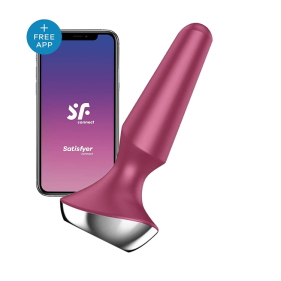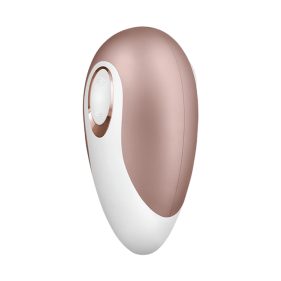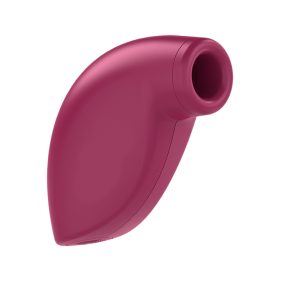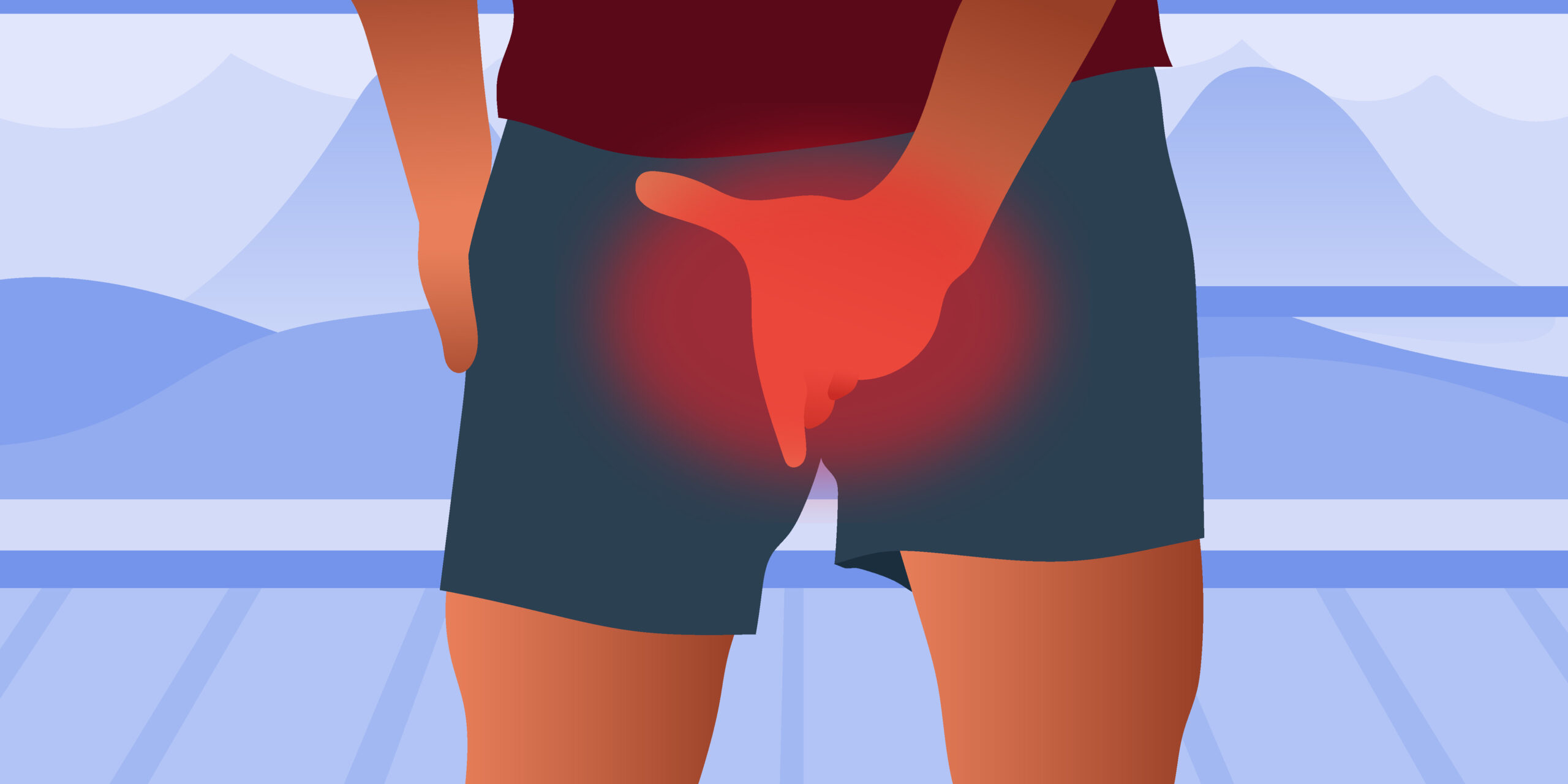
Disclaimer: This gender transition article is meant to be a source of valuable information for the reader. However, it is not an attempt to speak for trans people. We understand that everyone has a different experience with this process. If you have specific questions about transitioning and want to connect with the transgender community, you may check to TRANScend by LoveYourself, the first community-led transgender health facility in the Philippines.
Contrary to popular belief, biological sex and gender identity are defined differently.
Biological sex, also known as natal sex or sex assigned at birth, refers to the sex that a medical professional assigned to you at birth. It’s based on your physical attributes. If you have a penis, then you’re male. If you have a vagina, then you’re female. And if your genitals fall outside the male/female binary, you’re intersex.
Meanwhile, gender identity is a person’s innermost concept of self. This isn’t necessarily based on what genitals they have, but more on what gender they perceive themselves. This is also where gender roles are based. For instance, if a person defines themselves as a woman, society expects them to dress in feminine clothing and be in careers that involve nurturing, such as nursing or teaching.
Most of the time, a person’s biological sex corresponds to their gender identity; a person assigned female at birth perceives herself as a woman, a person with male sex sees himself as a man, and so forth. These people are called cisgender people.
On the other hand, there are cases wherein a person’s sex assigned at birth doesn’t align with what they feel. For instance, a person who was assigned male at birth may feel like a woman. She may prefer being called a feminine name, wear ladylike clothing, and may even want to have a lighter voice. These people are known as transgender people.
Since they identify themselves with doesn’t align with their physical attributes, some transgender people feel uncomfortable with their bodies. They may experience significant distress about their appearance and may have a strong desire to look like their gender identity— this is called gender dysphoria. To treat this condition, some trans people go through gender transitioning to affirm their identity.
What is Gender Transitioning?

Gender transitioning or gender transition is the process trans people go through to affirm their gender identity. The individual will go through several social and/or medical procedures to align their sex characteristics and/or physical appearance with their gender identity. For example, if a person assigned male at birth defines herself as a woman, she may take several steps to look, act, and talk like a woman.
Benefits of Gender Transitioning
Transitioning is a long, tedious, and complex process. It takes courage to step up from what society expects you to be and start becoming who you truly are. But once the person goes through this process, it can be highly rewarding and freeing. Below are some of the benefits that trans people may achieve from gender transition.
Keep in mind, though, that every transgender person’s transitioning experience is unique. Some may have to reap these benefits, while others may be experiencing some challenges after the transition (due to society’s discriminatory behavior.
1It improves one’s confidence and sense of self.

Trans people who transitioned tend to have higher self-confidence, as the process made them more comfortable with their skin. They become more motivated to try out new things and share their thoughts with the world. Some of them have also become more sociable.
-
₱4,045.00
-
₱2,695.00
-
Original price was: ₱4,045.00.₱3,640.50Current price is: ₱3,640.50.
-
₱1,595.00
2It improves one’s mental health.

According to a study published in the American Psychiatric Association, there are long-term health benefits for trans people who have taken gender-affirming surgery, one of the forms of gender transitioning.
The study found out that people who have taken the surgery were less likely to need mental health treatment during the study period than trans people who haven’t undergone surgery. As quoted on the published blog by American Psychiatric Association about the said study: “The study found the odds of receiving mental health treatment were reduced by 8% for every year since receiving gender-affirming surgery over the 10-year follow-up period.”
This means that transgender individuals who partake in transitioning may be less likely to suffer from mental health issues, such as depression, anxiety, etc. This doesn’t mean that every transitioned person would no longer have mental health conditions, though. It only lessens an individual’s chances of having mental illnesses.
-
₱4,745.00
-
₱4,745.00
-
₱2,045.00
3It enhances a person’s quality of life.

With an improved sense of self, better mental health, and boosted confidence, transgender people who went through the transitioning process may be freer and happier. They’ll also cultivate better relationships as they can now fully express their true selves.
Types of Gender Transition
One of the common misconceptions about transitioning is that you need to undergo gender-affirming surgeries. This isn’t the case, as there are different ways to affirm your gender identity. Below are the different types (and the procedures/steps under it) of gender transitioning.
Social Transition

This type doesn’t involve any surgical or medical procedures. The person undergoing this type of transition simply affirms their gender identity by adopting the name, pronouns, voice, and gender expression (clothing, interest, etc.) that aligns with their gender identity. Below are the following activities that a trans person does when doing this gender transition.
- “Coming out” to your loved ones about your gender identity. This means telling your family and/or friends about your experiences as a transgender person.
- Socially or legally changing your name.
- Changing your gender pronouns; it’s how people prefer you when they’re talking with you or with other people. (e.g. he/him, she/her, they/their)
- Changing your physical appearance without undergoing any medical or surgical procedures. For example, adjusting your fashion style, going for an entirely different hairstyle, packing (creating a bulge on your pants using a prosthetic penis), hair removal, binding (using tight or compression garments to flatten out your chest), padding (using underwear or undergarments to create an appearance of larger hips or breasts), and tucking (hiding your penis or scrotum by tucking it in).
- Expressing your gender identity on social media by adding it in your bio or creating a post for it.
Remember that you don’t have to do all the mentioned activities above when transitioning; go for the things you’re most comfortable with. Social transitioning isn’t a one-time event, either. It’s best to go for your preferred pace when transitioning. For instance, you can start with changing a few of your clothing items first, then changing your haircut, then start opening up to your loved ones, and so forth.
Medical Transition

For this type of gender transition, the individual will undergo several medical and/or surgical treatments to ensure that their physical attributes align with their gender identity.
Below are some of the procedures that a trans man, trans woman, or non-binary person may take to affirm their identity.
1Gender Affirmation Surgery
Gender Affirmation Surgery, also known as Sex Reassignment Surgery, refers to any surgical procedure that is intended to align a trans person’s gender identity, such as the following surgery options:
- Chest or “Top” Surgery – This procedure involves removing the breast tissue to masculinize the chest area (for transgender men and some nonbinary people) or inserting breast implants for a more feminine appearance (this works for transgender women and some nonbinary people).
- Genital or “Bottom” Surgery – This surgery is designed to modify one’s genitals to align them to their gender identity. It usually comes in nine different procedures:
- Vaginoplasty or Vulvoplasty – The surgeon would use skin from the penis and scrotum to build the inner and outer labia, a new opening for the urethra, and a new opening for the vagina.
- Orchiectomy – It’s designed to remove the testicles.
- Penectomy – This procedure removes the penis.
- Vaginectomy – It involves the removal of the vagina.
- Hysterectomy – This procedure removes the uterus.
- Oophorectomy – It’s designed to remove one or both ovaries.
- Metoidioplasty – This procedure enlarges the clitoris using testosterone replacement therapy, separating it to the labia minora. It’s designed to produce a penis.
- Phalloplasty – It involves constructing a penis from non-genital tissue.
-
₱150.00
-
₱150.00
-
₱150.00
-
₱150.00
2Facial Masculinization or Feminization Surgery
This surgical procedure makes a person’s face feminine or masculine, depending on the trans person’s gender identity.
3Hormone Replacement Therapy
For this procedure, the transgender individual will be given medication to induce physical changes in their body that align with their gender identity.
Not all transgender people are allowed to partake in hormone replacement therapy; if you have the following conditions below, your doctor may discourage you from getting this treatment:
- You’re going through or at risk for hormone-sensitive cancer (for example, breast cancer)
- You have deep vein thrombosis, in which a blood clot forms in one or more deep veins in your body.
- Related to the one above, you can’t do this therapy if you have a pulmonary embolism, in which there’s a blockage in one of the pulmonary arteries in your lungs.
- You’re pregnant or breastfeeding.
- You have uncontrolled behavioral or medical conditions.
Before going for this one, be aware taking medications for this therapy comes with health risks. Make sure to do your due diligence and consult your healthcare provider before partaking in any procedure involving hormone replacement therapy. Below are some of the risks/complications that a trans person might get from this treatment:
- Acne
- Sleep apnea
- Genital discomfort
- Nipple discharge
- Type 2 diabetes
- Infertility
- Hyperprolactinemia (excessive production of prolactin in your blood)
- Hypertension (high blood pressure)
- Polycythemia (excessive production of red blood cells)
- Dyslipidemia (abnormal level of cholesterol and other lipids, which increases your cardiovascular risk)
-
₱2,400.00
-
₱11,526.00
-
₱1,995.00
-
₱1,699.00
4Voice Therapy
This procedure doesn’t technically involve medication, but it’s connected to some medical gender transition procedures, such as hormone replacement therapy. For this one, the transgender individual will engage in numerous vocal exercises with a Speech-language pathologist (SLP).
The exercises will help the person modify their pitch, resonance, rhythm, language, pragmatics, and other essential elements of their voice. This ensures that the trans person’s voice matches with their gender identity.
Things to Remember Before Transitioning
As you’ve learned the basics of gender transition, you or a loved one might consider partaking in this journey. We support you or your loved one on freeing your true self, but make sure to be utmost careful when going through transition, as you’ll be giving your time, finances, and body to a tedious process. Below are some reminders before transitioning.
1Consult a mental healthcare professional first.

The first step for every person planning to transition is to consult a therapist. Talk to someone who specializes in gender issues. Once the therapist has confirmed that you have gender dysphoria, you will be introduced to different procedures and grant you the ability to give informed consent to partake in the said procedures. Keep in mind that surgical doctors may require psychiatric/psychologic clearances.
-
₱2,975.00
-
Original price was: ₱2,945.00.₱2,356.00Current price is: ₱2,356.00.
-
Original price was: ₱4,745.00.₱4,270.50Current price is: ₱4,270.50.
-
₱895.00
2Create a gender transition roadmap.

We recommend having a transitioning roadmap, which will include all the non-medical and medical procedures that you will partake in this journey. If you’re going to take surgical procedures, make sure to include pre-surgery and post-surgery plans.
Don’t also forget to create a budget plan for all the medications and surgical treatment you’ll be getting for the whole process; as much as we want you to transition, we also want to ensure that you have adequate funds for the process. For better and safer results, discuss this roadmap with your doctor, therapist, and closest loved ones.
-
₱8,660.00
-
₱3,450.00
-
₱1,595.00
-
₱169.00
3Go to reputable clinics and medical professionals only for medical transitioning treatments.

This is an important thing to note when going through the transition. As much as it’s tempting to say yes to cheaper procedures, never go to shady clinics that provide “budget-friendly” surgeries or hormone replacement therapy medications. Remember, your health is on the line, so make sure to invest in reputable institutions and doctors. We suggest contacting sexual health clinics such as TRANScend by LoveYourself and asking for their recommended doctors or medical institutions.
Frequently Asked Questions

If you still have questions about the transitioning process, don’t worry, as we’ve answered some of the frequently asked questions below.
1How do I know if I should transition or not?
The question answers depend on you. Do you feel uncomfortable with your genitals? Do you like dressing up or acting like the opposite sex? Are you feeling like you’re just conforming to the norm, and this makes you depressed? Do you feel extreme stress by just being you?
If you’re answering yes to the questions mentioned, then there’s a chance that you’re going through gender dysphoria. But then again, each person is unique, and what you feel may be caused by other factors. This is why you must consult a therapist first before considering gender transitioning.
2How long does the gender transition process take?
This depends on the treatment and surgical procedures that you’ll be taking. You usually need to wait for a couple of years to fully transition.
3Do I need to have a gender-affirming surgery to complete the transitioning process?
No, transitioning doesn’t require surgical procedures. Each trans person’s transition journey is unique. Some people are already happy with changing their hairstyle and clothing, while others may want to fully change their appearance from top to bottom.
4Are medical transition procedures irreversible?
This depends on the gender transition treatment that you’re taking. If you’ve undergone gender-affirming surgeries, most procedures have lasting effects. On the other hand, if you’ve taken hormone therapy–only treatments, there’s a higher chance of reverting the effects.
5Does transitioning change your sexual orientation?
Nope. Gender identity and sexual orientation have different definitions. Gender identity refers to your inner men, women, or non-binary self. On the other hand, sexual orientation refers to the gender identity you’re attracted to. A man transitioning into a woman doesn’t necessarily mean she’ll just magically like men more. But there are also cases wherein a transitioned person becomes attracted to their opposite gender.
Takeaway
Gender transition is a difficult yet rewarding process for trans people who simply want to free their true selves. They give their time, money, energy and even compromise their health just to be able to become the person they’ve always wanted to be.
This is why if a relative or close friend has mentioned to you that they’re transitioning, please respect their decision and support them on their journey. If you’re the one who’s going through transition, we hope that this guide has helped you learn the basics. We also suggest talking to medical professionals for more information and joining communities to help you on this journey.


























